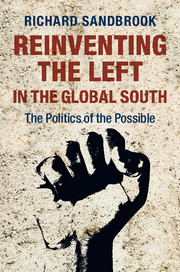Book contents
- Frontmatter
- Epigraph
- Contents
- List of figures
- List of tables
- Acknowledgments
- 1 Reinventing the Left
- 2 Alternative visions: leftist versus neoliberal paradigms
- 3 How neoliberalism fails
- 4 Making history: agency, constraints and realities
- 5 Pitfalls and promise of the moderate Left
- 6 The radical Left: moving beyond the socialist impasse
- 7 Politics of the possible
- Bibliography
- Index
2 - Alternative visions: leftist versus neoliberal paradigms
Published online by Cambridge University Press: 05 September 2014
- Frontmatter
- Epigraph
- Contents
- List of figures
- List of tables
- Acknowledgments
- 1 Reinventing the Left
- 2 Alternative visions: leftist versus neoliberal paradigms
- 3 How neoliberalism fails
- 4 Making history: agency, constraints and realities
- 5 Pitfalls and promise of the moderate Left
- 6 The radical Left: moving beyond the socialist impasse
- 7 Politics of the possible
- Bibliography
- Index
Summary
Neoliberalism, the currently dominant policy framework and development ideology, supplanted the Keynesian order from the late 1970s on. Cracks appeared in the Keynesian consensus in 1971 when the United States withdrew its pledge to back its currency with gold at a set rate, the cornerstone of the Bretton Woods fixed exchange-rate regime. Further stresses flowed from a crisis of stagflation in the West and faltering state-directed import-substituting industrialization (ISI) and socialisms in the Global South and East. Neoliberal leaders emerged – most prominently General Augusto Pinochet in Chile, together with Margaret Thatcher and Ronald Reagan – who seized on the politico-economic malaise as signifying the failure of the state and Keynesian or socialist remedies, and the need for deregulation, liberalization, privatization and open economies to rejuvenate market forces. At first, in the 1980s, this “Washington Consensus” was not widely contested.
But opposition mounted in the 1990s and thereafter. Probably the East Asian financial collapse of 1997 was the turning point, though other financial crises preceded and followed this catastrophe. The narrow, market-fundamentalist Washington Consensus gave way to an increasingly more complex, state-friendly and inclusive Post-Washington Consensus. The global financial crisis of 2008–9, however, dealt a further, heavy blow to the dominant doctrine, even in its more complex and open-ended form. The Left, which had been humbled by the collapse of socialisms around the world, recovered its élan.
- Type
- Chapter
- Information
- Reinventing the Left in the Global SouthThe Politics of the Possible, pp. 27 - 62Publisher: Cambridge University PressPrint publication year: 2014

